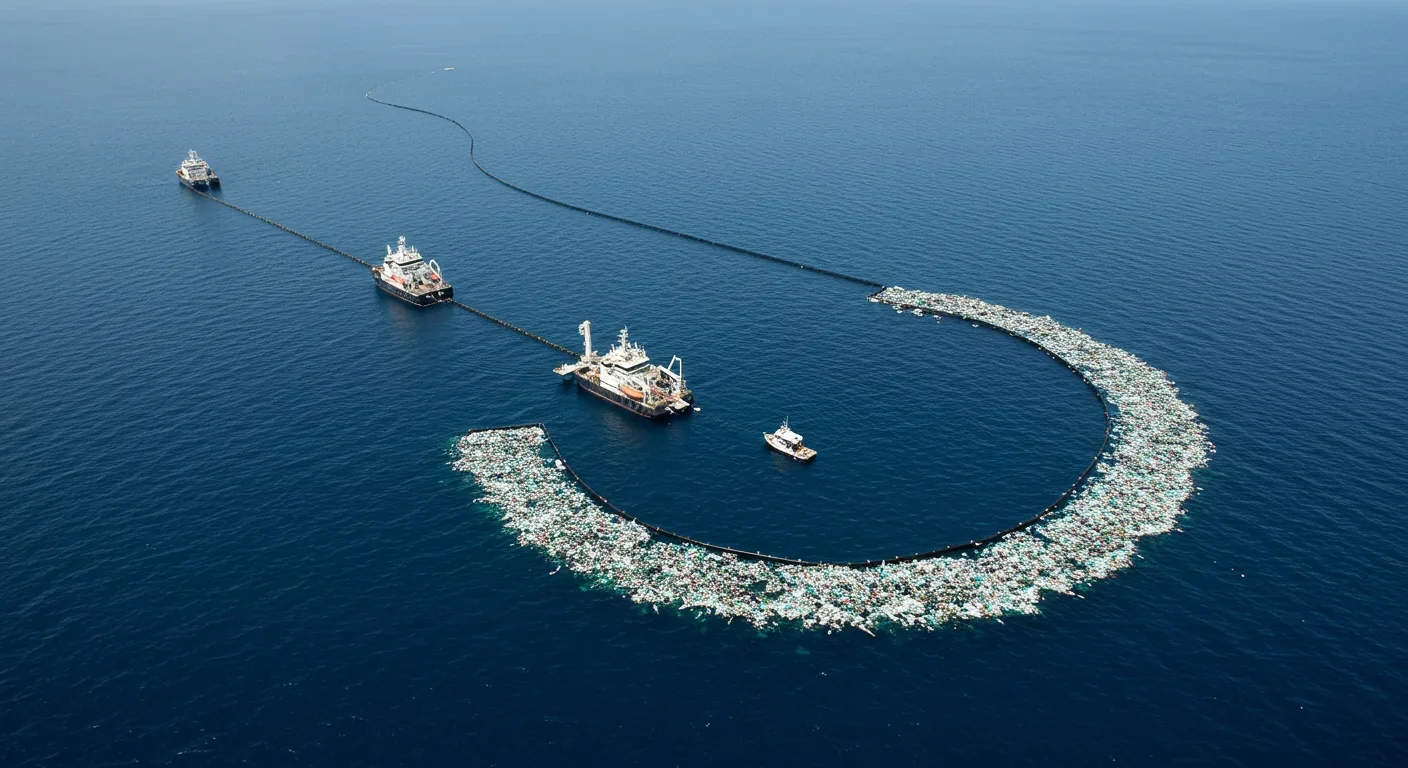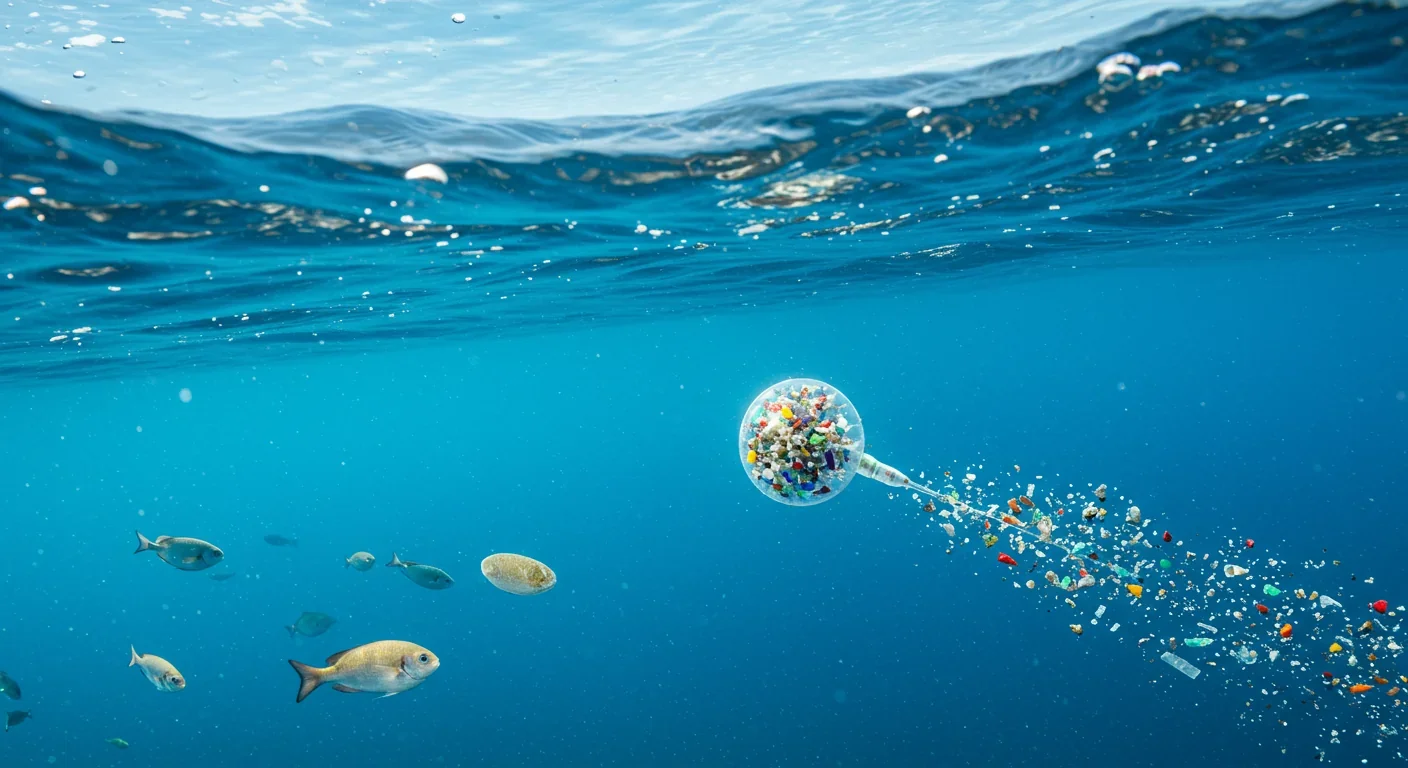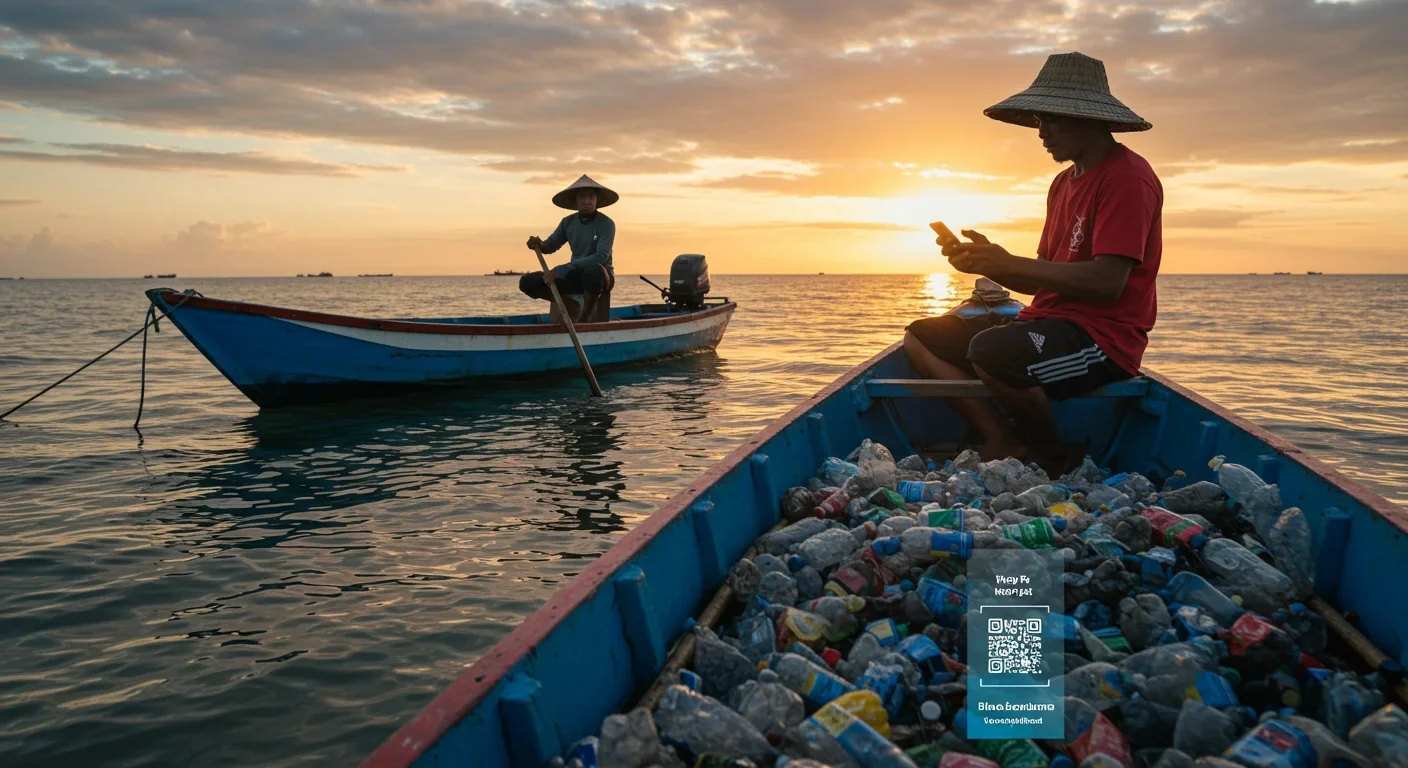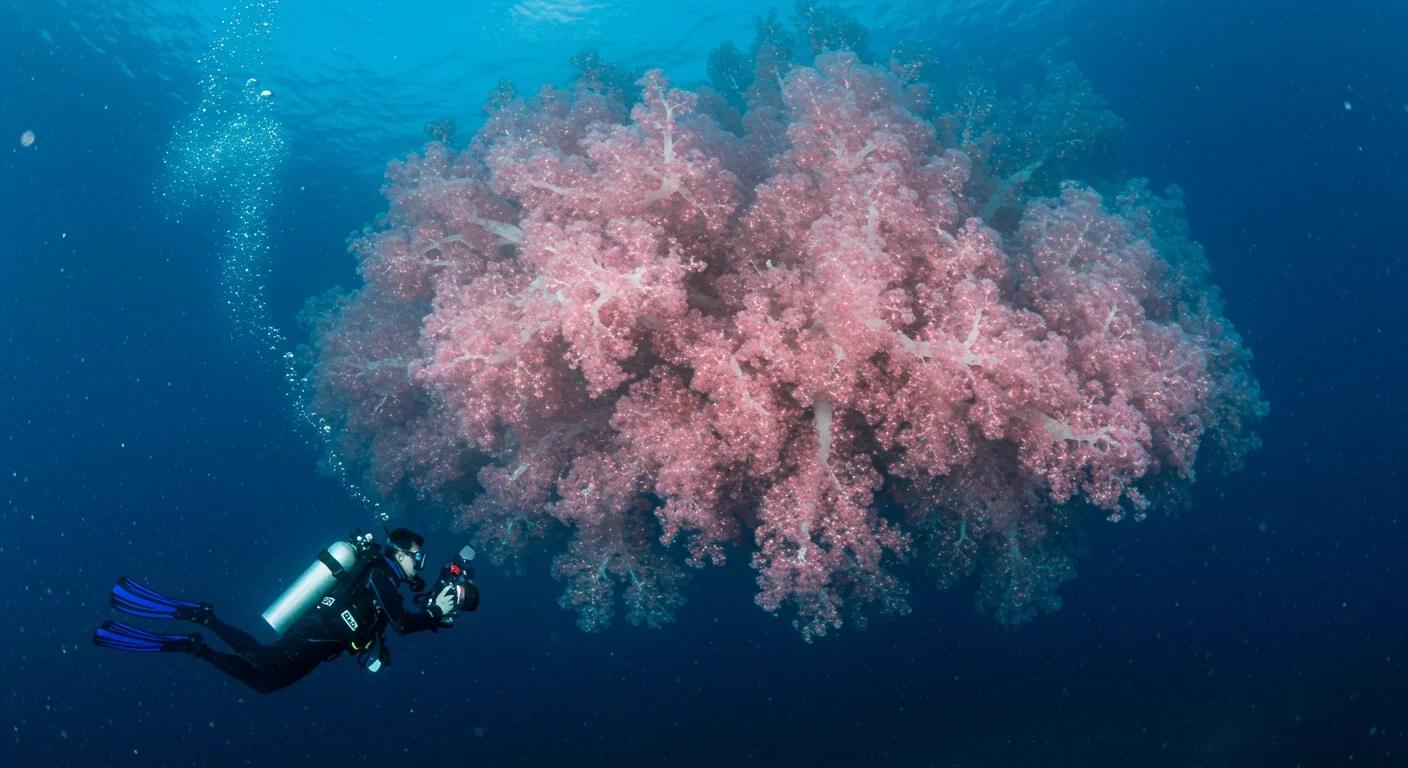Digital Pollution Tax: Can It Save Data Centers?

TL;DR: Revolutionary cleanup technologies have cut ocean plastic removal costs by 90% while international treaties and corporate initiatives transform waste into valuable products, offering real hope for reversing decades of marine pollution.

By 2050, if left unaddressed, plastic production and incineration will spew 56 billion tonnes of greenhouse gases into our atmosphere. That's not some distant doomsday scenario, it's the trajectory we're on right now. But here's what's different today: we're no longer just wringing our hands about ocean plastic. We're pulling it out at unprecedented scales, transforming it into valuable products, and fundamentally rethinking how waste enters the water in the first place.
The Great Pacific Garbage Patch has become the symbol of our throwaway culture gone wrong. Yet between AI-powered drones, whale-inspired filter systems, and international treaties getting teeth, there's a quiet revolution happening in ocean cleanup. What started as a handful of experimental projects has exploded into a coordinated global effort combining cutting-edge technology with old-fashioned policy work.
The numbers are staggering. Plastics account for 70% of litter at sea, and most of it breaks down into microplastics, particles small enough for plankton and fish to ingest. These microplastics don't just float harmlessly; they work their way up the food chain through a process called biomagnification.
Recent research on seamounts in the North Atlantic revealed something troubling: if you extrapolate the measured flux uniformly across a 6.85 km² summit area, approximately 444 million microplastics reach the summit each year. Seamounts aren't just passive sinks for surface debris; they actively accumulate microplastics, creating concentrated pollution zones in what should be pristine deep-sea environments.
The ecological damage cascades through the system. Small primary consumers like shrimp, bivalves, anchovy, and sprat accumulate the highest concentrations of microplastics per unit biomass. Then higher-level predators ingest microplastics mainly through their diet, creating a toxic feedback loop throughout marine ecosystems.
Here's where things get interesting. The Ocean Cleanup's cost per kilogram of plastic removed plummeted from €49.4 in 2022 to €5.22 in 2023, a 9.4-fold reduction. That's not incremental improvement, it's a complete transformation in economic viability.
The technology driving this change comes from unexpected places. Dutch engineers developed cleanup systems inspired by blue whale baleen, the natural filter whales use to strain krill from ocean water. This biomimicry approach offers a scalable, nature-inspired method that's both efficient and gentle on marine life. To date, these systems have removed 15 million kg of plastic from the oceans.
But the real game-changer might be micro-robot swarms. These autonomous systems serve a dual role: they collect debris while simultaneously monitoring marine ecosystems in real time. Picture thousands of tiny robots coordinating like a school of fish, mapping plastic hotspots and adjusting their collection patterns on the fly. The robots don't just clean; they learn.
AI-powered drones are adding another dimension to the fight. Since 1,000 rivers account for roughly 80% of riverine plastic emissions, stopping plastic at the source makes more sense than waiting for it to reach the open ocean. These drones create AI-driven hotspot maps that feed directly into barrier deployment, creating self-optimizing cleanup systems that get smarter with each mission.
The space-based approach is equally promising. Hyperspectral remote sensing, coupled with machine-learning classification and multi-sensor data fusion, could provide the first globally consistent, high-resolution maps of plastic density across the Great Pacific Garbage Patch. NASA's PACE mission uses an Ocean Color Instrument covering a continuous spectral range from 314.5 nm to 894.6 nm, plus nine shortwave infrared bands. That means we can see plastic concentrations from orbit and direct cleanup efforts exactly where they're needed most.

One of the most surprising developments isn't just about cleanup; it's about value creation. Ocean plastic recovered by cleanup operations is being transformed into high-quality consumer goods, from sunglasses to car parts. The revenue from selling these products directly funds additional cleanup efforts, forming a virtuous economic cycle.
This isn't small-scale artisan work. Interceptor 020 in Indonesia grew the Tanjung Burung Waste Bank capacity from 200 kg to 600,000 kg per month. That's a 3,000-fold increase, demonstrating how local waste management infrastructure can scale rapidly when economic incentives align with environmental goals.
The psychological shift is significant too. When ocean plastic becomes a valuable resource rather than just garbage, it changes the entire cleanup equation. Suddenly you're not asking people to sacrifice for the environment; you're offering them a business opportunity.
The Ocean Cleanup's 30 Cities Programme represents a novel model: leveraging existing urban infrastructure and governance for large-scale environmental action. They're positioning 30 Interceptor modules in strategically chosen urban centers across Asia and the Americas, focusing on the river systems that serve as highways for plastic pollution.
This city-wide deployment makes intuitive sense. Cities already have the governance structures, maintenance capabilities, and public engagement needed to sustain cleanup efforts long-term. Rather than treating ocean cleanup as some distant problem requiring expedition-style interventions, this approach integrates it into everyday urban management.
The barriers sit at key points in river systems, catching plastic before it reaches the ocean while it's still concentrated and relatively easy to collect. It's the environmental equivalent of fixing the leak instead of constantly mopping the floor.
Here's something researchers didn't expect: cleanup operations occasionally rescue threatened species already entangled in or having ingested plastic. During 18 campaigns, The Ocean Cleanup's System 03 captured 84% of incidental fish by count, predominantly coastal species that may actually be invasive in the open ocean. So the cleanup serves multiple ecological functions simultaneously: removing plastic, rescuing endangered species, and potentially helping native species by removing competitors.
This dual benefit wasn't part of the original design, but it highlights how environmental interventions often create positive cascading effects we don't fully anticipate. It's a reminder that ecosystems are complex, and fixing one problem frequently helps with others.
Technology alone won't solve this. The political dimension matters just as much, and there's real movement happening. The High Ambition Coalition, launched by Norway and Rwanda in 2022, now includes 74 member states working toward an international treaty on plastic pollution. That's significant because it includes both major polluters and nations suffering the worst impacts.
The inclusion of Indigenous peoples in treaty negotiations appears to increase effectiveness, based on preliminary analysis. Indigenous communities often have both traditional knowledge about marine ecosystems and direct experience with pollution impacts, making their participation valuable beyond just representation.
On the corporate side, Extended Producer Responsibility (EPR) schemes are shifting financial and regulatory responsibility from the public sector to packaging producers. The UK's EPR scheme, rolling out in 2025, requires producers to register with the Environment Agency and pay waste management fees that vary by packaging type. This creates direct financial incentives for companies to design packaging that's actually recyclable, not just theoretically so.
These policy frameworks work because they make pollution expensive and cleanup profitable. Simple economics does a lot of the heavy lifting once the rules are in place.

Something changed when companies realized ocean cleanup could be part of their brand story. Over 190 countries participated in World Cleanup Day during a recent global event, with major corporations like Daiichi Sankyo joining the effort in Japan and elsewhere.
This corporate participation matters because it brings resources, coordination, and sustained commitment that purely volunteer efforts struggle to maintain. When a pharmaceutical company or tech firm decides ocean cleanup aligns with their values, they bring logistics expertise, funding, and employee engagement that amplifies impact far beyond any individual volunteer group.
The synergy between local corporate cleanup participation and global environmental movements creates a model for scaling community-level action. A cleanup event in Tokyo connects to efforts in Seattle and São Paulo, all coordinated through global platforms but executed with local knowledge and resources.
Here's the part that doesn't get enough attention: ocean plastic and climate change aren't separate problems. In 2019, plastic production and incineration contributed greenhouse gases equivalent to 850 million tonnes of CO₂. By 2050, if production continues on its current trajectory, that figure could reach 56 billion tonnes.
This dual threat to both ocean biology and global climate emphasizes the need for integrated policy frameworks addressing both waste management and emissions reductions. You can't solve one without considering the other, because they're different symptoms of the same problem: extracting fossil fuels, converting them to short-lived products, then burning or abandoning them.
The good news is that solutions overlap. Circular economy approaches that keep plastic in use longer reduce both ocean pollution and climate emissions. Waste-to-energy systems, when properly designed, can recover value from plastic that can't be recycled. And prevention, simply using less plastic, helps with everything.
The usual advice about reducing single-use plastics still applies, but there are more direct ways to contribute now. The waste management transformation in places like Indonesia shows that local participation in waste collection and sorting creates real impact when connected to broader systems.
Supporting companies that use recovered ocean plastic in their products closes the economic loop. When you buy sunglasses made from ocean plastic, you're not just making a statement; you're funding the next cleanup mission. That direct connection between consumption and impact is new.
Politically, supporting EPR legislation and international treaties might sound boring compared to beach cleanups, but it's where leverage lives. One well-designed policy can eliminate more plastic from the ocean than a thousand volunteer weekends, important as those are for awareness and community building.
By 2030, researchers project we could reduce ocean plastic flows by 80% if current trajectories in technology, policy, and corporate responsibility continue. That's not guaranteed, obviously. Technology could plateau, political will could evaporate, and corporate commitments could turn out to be greenwashing.
But the fundamentals look solid. The cost curve for cleanup keeps dropping. The €49.4 to €5.22 cost reduction happened in just one year; imagine what's possible in ten. Policy frameworks are spreading globally, with nations learning from each other's successes and failures. And the circular economy model is proving profitable, not just aspirational.
The Great Pacific Garbage Patch isn't going away tomorrow. Over 206,000 kg was removed by 2023, which sounds impressive until you consider the total mass is measured in millions of tonnes. We're barely scratching the surface.
But here's what's different: we're actually scratching it now. For decades, ocean plastic was this overwhelming problem that inspired despair and hand-wringing but little effective action. Now we have the tools, the economic models, the political frameworks, and the global coordination to actually make progress.
The question isn't whether we can clean the oceans; we can. The question is whether we'll deploy these solutions fast enough, at scale, with the sustained commitment needed to outpace new pollution. That depends on choices being made right now in corporate boardrooms, legislative chambers, and research labs around the world.
The ocean doesn't care about our timelines or our political cycles. It just keeps accumulating whatever we throw at it, breaking plastic down into smaller and smaller pieces until it permeates the entire marine food web. But for the first time, we're fighting back with something more than good intentions. We've got technology that works, economics that pencil out, and a growing global consensus that this problem is solvable.
Whether we actually solve it is up to us.

Over 80% of nearby white dwarfs show chemical fingerprints of destroyed planets in their atmospheres—cosmic crime scenes where astronomers perform planetary autopsies using spectroscopy. JWST recently discovered 12 debris disks with unprecedented diversity, from glassy silica dust to hidden planetary graveyards invisible to previous surveys. These stellar remnants offer the only direct measurement of exoplanet interiors, revealing Earth-like rocky worlds, Mercury-like metal-rich cores, and ev...

Hidden mold in homes releases invisible mycotoxins—toxic chemicals that persist long after mold removal, triggering chronic fatigue, brain fog, immune dysfunction, and neurological damage. Up to 50% of buildings harbor mold, yet most mycotoxin exposure goes undetected. Cutting-edge airborne testing, professional remediation, and medical detox protocols can reveal and reverse this silent epidemic, empowering individuals to reclaim their health.

Data centers consumed 415 terawatt-hours of electricity in 2024 and will nearly double that by 2030, driven by AI's insatiable energy appetite. Despite tech giants' renewable pledges, actual emissions are up to 662% higher than reported due to accounting loopholes. A digital pollution tax—similar to Europe's carbon border tariff—could finally force the industry to invest in efficiency technologies like liquid cooling, waste heat recovery, and time-matched renewable power, transforming volunta...

Transactive memory is the invisible system that makes couples, teams, and families smarter together than apart. Psychologist Daniel Wegner discovered in 1985 that our brains delegate knowledge to trusted partners, creating shared memory networks that reduce cognitive load by up to 40%. But these systems are fragile—breaking down when members leave, technology overwhelms, or communication fails. As AI and remote work reshape collaboration, understanding how to intentionally build and maintain ...

Mass coral spawning synchronization is one of nature's most precisely timed events, but climate change threatens to disrupt it. Scientists are responding with selective breeding, controlled laboratory spawning, and automated monitoring to preserve reef ecosystems.

Your smartphone isn't just a tool—it's part of your mind. The extended mind thesis argues that cognition extends beyond your skull into devices, AI assistants, and wearables that store, process, and predict your thoughts. While 79% of Americans now depend on digital devices for memory, this isn't amnesia—it's cognitive evolution. The challenge is designing tools that enhance thinking without hijacking attention or eroding autonomy. From brain-computer interfaces to AI tutors, the future of co...

Transformers revolutionized AI by replacing sequential processing with parallel attention mechanisms. This breakthrough enabled models like GPT and BERT to understand context more deeply while training faster, fundamentally reshaping every domain from language to vision to multimodal AI.